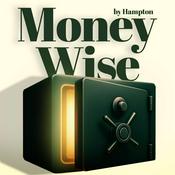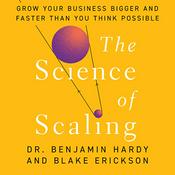Available Episodes
5 of 34
- Fail Forward #34 | When Nations Rise… and When They Fail | Malesela, Roche & VuyileIn this episode of Fail Forward Friday, hosts Malesela and Doc Roche sit down with returning guest Vuyile Gabuza to unpack the fascinating story of Japan’s rise and slow decline. From the glory days of manufacturing dominance to today’s population crisis, Japan offers powerful lessons for nations, leaders, and entrepreneurs. But this is more than just Japan’s story. The trio zooms out to explore: 🇯🇵 Japan’s aging population & shrinking workforce 🌍 Africa’s youthful population vs. old leadership — a blessing or a curse? 🏛 Why institutions matter: inclusive vs extractive systems 🇺🇸 The US under Trump — brand damage or bold reset? 🇨🇳 China’s pivot from closed communism to global dominance 💡 Lessons for entrepreneurs: change, succession, balance, and resilience 🔥 Expect sharp insights, bold comparisons, and practical takeaways for both business and life. This is not just about nations—it’s about you as an entrepreneur, leader, and builder. 👉 Don’t just watch history happen. Learn from it. Fail forward. 📌 Subscribe for more real stories, bold conversations, and hard-hitting lessons every Friday! #FailForwardFriday #Entrepreneurship #Leadership #JapanEconomy #AfricaRising #BusinessLessons #NationsFail #GlobalEconomy #Innovation #ChangeIsConstant YouTube--------1:11:15
- Fail Forward #33 | Japan Was Supposed to Overtake the USA… What Happened? | Malesela, Roche & VuyileIn this gripping episode of Fail Forward Friday, hosts Malesela and Roche sit down with friend of the show Vuyile Gabuza to unpack one of the most fascinating “fail forward” stories, not of a person or company, but of a nation: Japan. From the ashes of World War II to the heights of becoming the world’s second-largest economy, Japan seemed destined to overtake the United States. But just like a brilliant footballer who never quite lived up to his full potential, Japan’s economic rise was capped by a series of decisions, cultural traits, and external pressures that stalled its dominance. The conversation is as educational as it is entertaining, sprinkled with humour, football analogies, and friendly jabs between the hosts and their guest. Together they explore: The Meiji Restoration – how Japan caught up with the West by embracing industrialisation and process-driven excellence. Post-war revival – why U.S. support, combined with Japan’s Kaizen approach, turned it into a manufacturing powerhouse. The bubble years – golf club memberships worth economies, Tokyo real estate outvaluing California, and Japan Inc. buying up Hollywood. The Plaza Accord & the crash – how international pressure and speculative excess triggered Japan’s “Lost Decades.” Parallels with China – can China avoid becoming “the next Japan,” or is history doomed to repeat itself? The cultural cost of fear of failure – how risk-aversion, rigid institutions, and the weight of tradition slowed innovation. This episode doesn’t just tell history, it raises urgent questions about the future of work, the Fourth Industrial Revolution, and whether nations (and companies) can innovate without losing themselves. By the end, you’ll find yourself reflecting on entrepreneurship, culture, and the fine line between growth and decline. It’s not just about Japan, it’s about all of us. 👉 If you’ve ever wondered how countries (like companies) rise, stumble, and reinvent themselves, you’ll want to watch this one. YouTube--------52:55
- Fail Forward #32 | Rebuilding From Zero After a Stroke | Malesela, Tebogo and ThekoTheko Ntseare’s life changed in a single morning.💥 In this raw and inspiring episode of Fail Forward Friday, he shares how a sudden stroke nearly ended his career, the painful mistakes that followed, and how he fought back using grit, family, and even AI. It’s not just a story about business, it’s about survival, love, and redefining success when life knocks you down. 💪 📌 Watch if you’ve ever wondered: How do you keep a business alive after a personal crisis? What really matters when everything else falls away? Can technology help rebuild a broken life? 🎯 Real. Honest. Unmissable. #FailForwardFriday #Entrepreneurship #Inspiration #StrokeRecovery #AI #BusinessLessons YouTube--------1:15:07
- Fail Forward #31 | Build Loudly? The Tallest Nail Gets the Hammer | Malesela,Roche & TebogoIn a time where visibility feels like currency, Fail Forward Friday dives head-first into one of the most quietly controversial questions in entrepreneurship today: “Should you build in silence or broadcast your every move?” Malesela and Roche are joined by Tebogo Mahlo, a recurring and always sharp guest, to unpack the fragile tightrope between quiet execution and loud marketing. What follows is a masterclass in nuance, vulnerability, and streetwise insight. 🚧 From WhatsApp statuses to LinkedIn strategy... Tebogo lays bare the internal tug-of-war every entrepreneur faces: post and risk the haters, or stay silent and risk being forgotten? She shares why, as a founder of Nosto Holdings, she often chooses discretion over display, and how the human behind the business sometimes just needs space to build. 💣 Malesela drops bombs on the double-edged sword of the attention economy, where likes can lead to lifestyle audits and flashy wins can summon SARS or scammers. He reminds us of the cautionary tales, like water tank millionaires turned headlines, and how not every story that trends is built to last. 🔍 Roche, ever the strategist, draws us into the Apple playbook: suspense sells. And sometimes, it's the secrecy that creates the spark. He unpacks how building loudly can be a trap, especially if you're not operationally ready. “The tallest nail attracts the hammer,” he warns. Riveting. 🎭 The episode also explores: How social media confuses personal brands and business strategy Why some entrepreneurs build for attention, not impact How to tell the difference between influence and illusion What platforms to show up on, and when to vanish for growth Why being industry-famous matters more than being Kardashian-famous 🧨 Big quotes include: “People can’t destroy what they don’t know.” “Your hype must never outrun your capacity.” “The loudest aren’t always the ones with the most substance.” “He was the marketing budget… but at least he delivered.” 🔥 🎙️ This episode is real talk. No filters. No fluff. Just three minds breaking down what most people pretend to know. Whether you're a start-up founder, a social media maven, or someone just trying to figure out how loud to be, this is the conversation you didn’t know you needed. YouTube--------1:12:50
- Fail Forward #30 | What Entrepreneurs Get WRONG on TV! | Malesela, Roche & LiaboIn what might be the most riveting episode yet, Fail Forward Friday brings you an electrifying conversation that cuts deep into the heart of entrepreneurship, exposure, and the hidden blunders no one dares to speak of. 🎤 Enter Liabo Setho, the unapologetic queen of South African business journalism, the firebrand behind SMME On Point, and the woman who’s given over 500 small businesses their first moment of national spotlight. For the first time, she swaps her anchor seat for the hot seat, and she delivers. From the heart of the newsroom to the alleys of township puzzle shops, Liabo takes us on an unforgettable journey: 💥 How a segment she created out of frustration became the most consistent entrepreneurship platform on national TV. 💥 The surreal moment when an ex-offender recognized her as his inspiration, inside prison walls. 💥 The silent mistakes entrepreneurs make on national interviews, from freezing under the lights to missing million-rand opportunities because of poor media prep. But that’s just the beginning... 🔥 What happens when the media that built you turns on you? 🔥 Is South Africa truly ready to tell the REAL stories of township hustlers, mushroom farmers, jam-makers and DIY furniture queens? 🔥 And can we finally stop romanticising sexy businesses and start respecting the non-Instagrammable ones that actually feed families? Liabo doesn’t hold back, with warmth, wisdom and fierce honesty, she schools the room on: 🎯 The power (and peril) of media exposure 🎯 How to repurpose interviews like a PR ninja 🎯 Why professionalizing your business before the spotlight finds you is no longer optional 🎯 And how to speak with clarity, confidence, and conviction, even when your heart is breaking One part masterclass. One part heart-to-heart. One unforgettable hour. 💥 From SMME survival to national impact 💥 From missed opportunities to masterful comebacks 💥 From crying on-air to owning your narrative This episode is more than a conversation, it’s a playbook for entrepreneurs who want to be seen, heard, and taken seriously. Watch it. Share it. Bookmark it. Because as Roche says: “The media is a fickle mistress, she’ll build you up, and drop you without warning.” But with Liabo’s insights, you’ll know how to rise either way. 👉 Fail Forward Friday: The episode you didn’t know you needed. YouTube--------1:23:16
More Business podcasts
Trending Business podcasts
About Fail Forward Friday
Fail Forward Friday is a weekly Podcast show where the hosts Dr Roche Mamabolo and Malesela Molepo dissect and discuss the most epic business blunders from around the world. Each host brings a unique story to the table, providing context, analysis, and key takeaways for entrepreneurs and business professionals alike.
The show aims to destigmatize failure by showcasing real-world examples of missteps, mishaps, and outright disasters. Through engaging discussions and insightful commentary, Fail Friday transforms these blunders into valuable learning opportunities, helping viewers understand the factors that contribute to failure and how to avoid them.
With a mix of humour, expertise, and a healthy dose of schadenfreude, Fail Friday is the perfect way to learn from the mistakes of others and ensure that your own business ventures don't end up as the next cautionary tale.
Podcast websiteListen to Fail Forward Friday, BizNews Radio and many other podcasts from around the world with the radio.net app

Get the free radio.net app
- Stations and podcasts to bookmark
- Stream via Wi-Fi or Bluetooth
- Supports Carplay & Android Auto
- Many other app features
Get the free radio.net app
- Stations and podcasts to bookmark
- Stream via Wi-Fi or Bluetooth
- Supports Carplay & Android Auto
- Many other app features


Fail Forward Friday
Scan code,
download the app,
start listening.
download the app,
start listening.





































